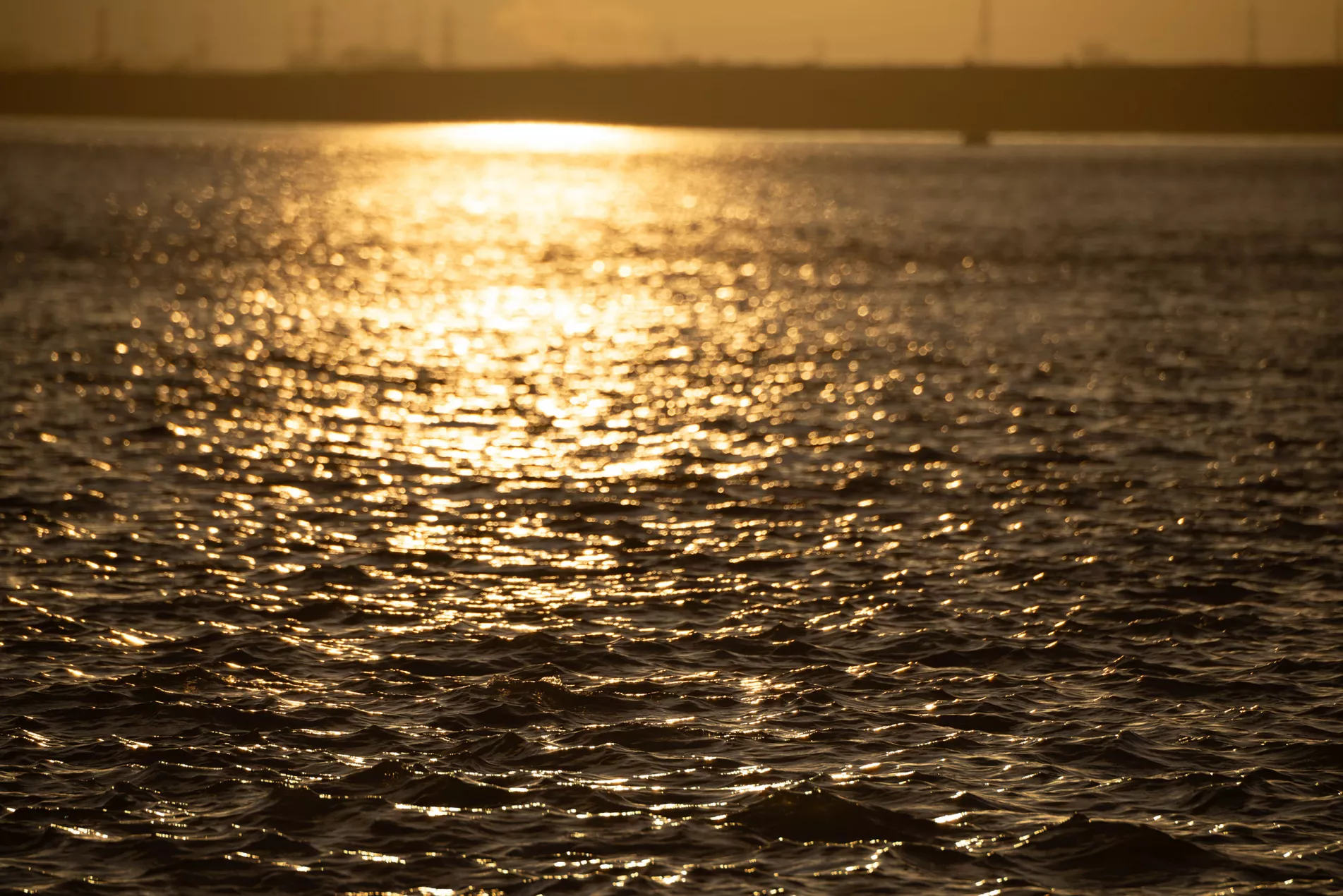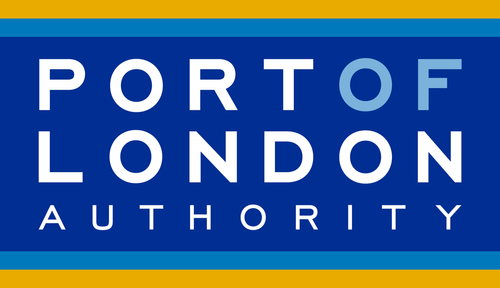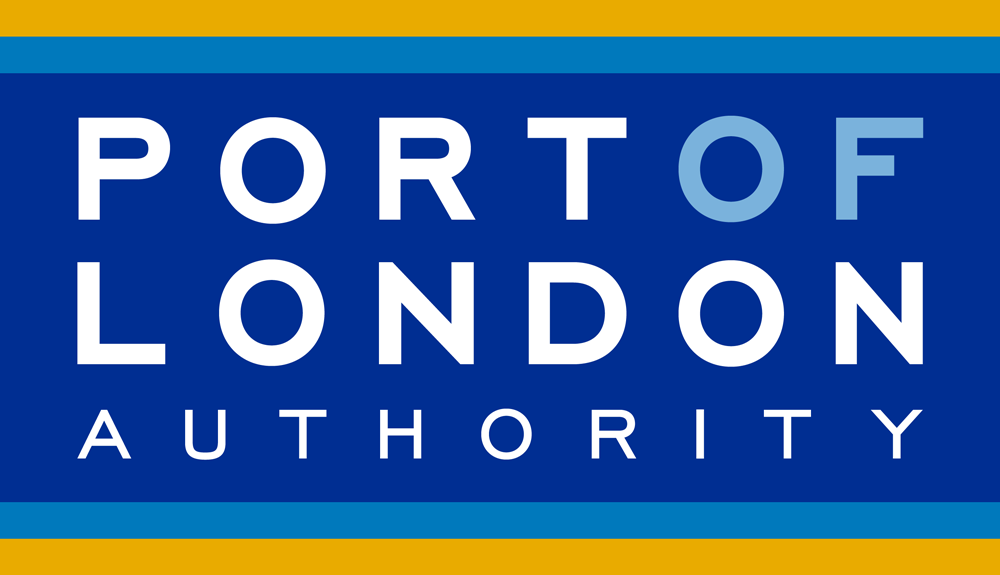Live Tides
NOTICES TO MARINERS
Charts & Surveys
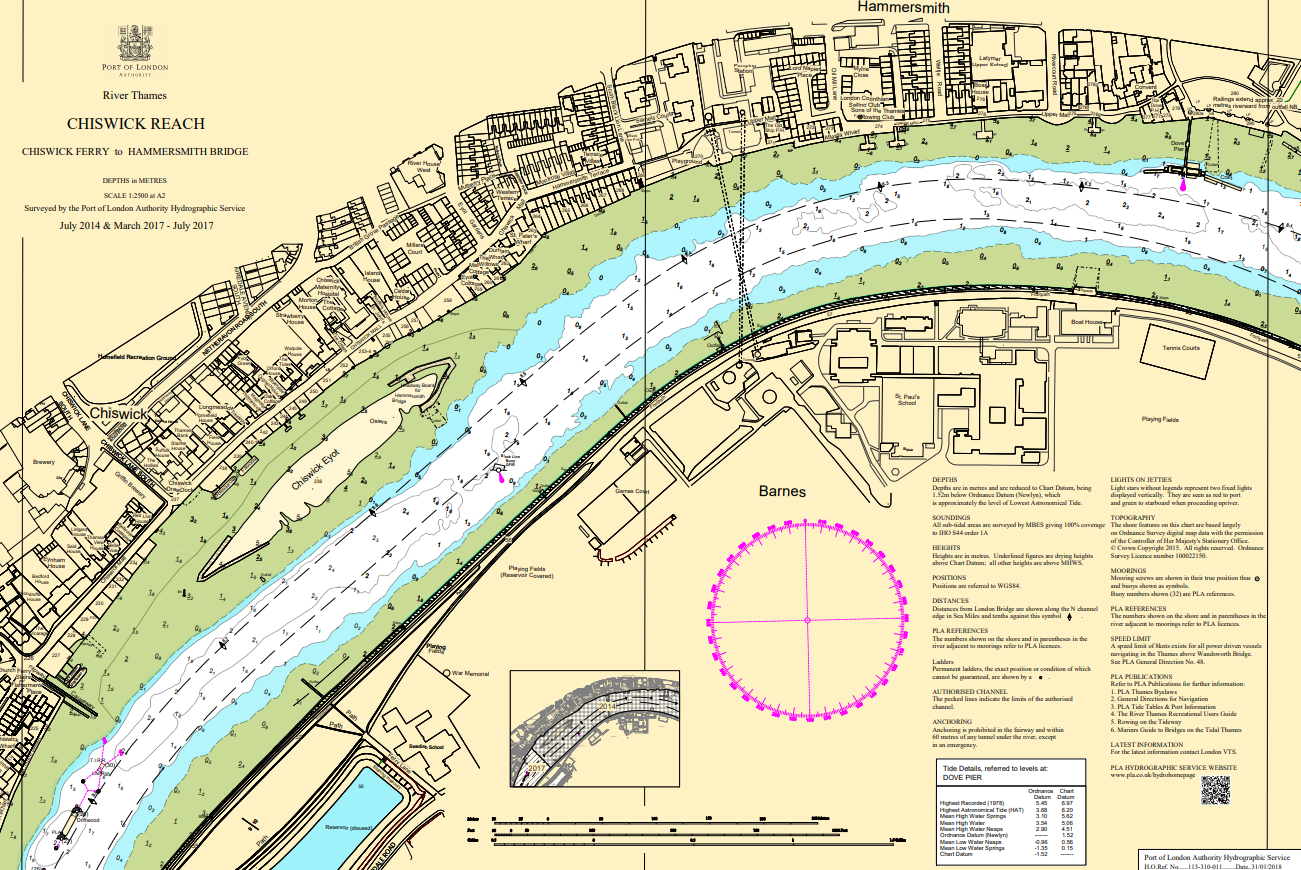
Incident reporting
Life-threatening emergencies on the river:
Call 999 and ask for the Coastguard
For near miss, safety observations and incident reporting click below
Port of London Harbour Revision Order formal consultation starts
The Marine Management Organisation (MMO) has today (18 August 2021) started its formal consultation on a draft Port of London Authority (PLA) Harbour Revision Order (HRO).
HROs amend the existing legislative basis of a port and are consented under the Harbours Act 1964. The MMO has, since 2010, undertaken this process on behalf of the Secretary of State for the Department of Transport.
The HRO is intended to modernise the Port of London Act 1968, under which the PLA operates. It takes into account the nature of modern operations and technology in use on the river today and the continued evolution of the PLA as a modern, transparent organisation.
The PLA HRO can be found on the GOV.UK website (https://www.gov.uk/government/publications/port-of-london-authority-harbour-revision-order), it is also on PLA website. The PLA HRO reflects revisions made after an informal, pre-submission consultation in autumn 2019. More than 50 stakeholders contributed through the informal consultation phase.
“The tidal Thames and the PLA have changed radically since the Port of London Act under which we operate was last updated,” explained Robin Mortimer, chief executive of the PLA. “The draft HRO on which the MMO is consulting has been developed through engagement with our many stakeholders over the last eighteen months.
“With the draft reviewed and cleared for formal consultation, we encourage anyone who has an interest in the PLA and the Thames to have a look and share any views. All comments need to go to the MMO.”
The formal consultation will last for an extended 56-day period, closing on 12 October 2021. An HRO consultation normally lasts 42 days; the PLA has requested the extension to allow as many people as possible opportunity to engage and comment.
Comments on the PLA HRO application should be sent to the MMO Marine Licensing Team by email [email protected], or by post at the address below:
Marine Licensing Team
Marine Management Organisation
Lancaster House
Hampshire Court
Newcastle Upon Tyne
NE4 7YH
To be considered, representations need to:
- be received before the expiry of a period of 56-days consultation period;
- be made in writing and quoting reference HRO/2020/00005;
- state the grounds of the objection or representation;
- indicate who is making the objection or representation; and
- give an address to which correspondence relating to the objection or representation may be sent.
Related content
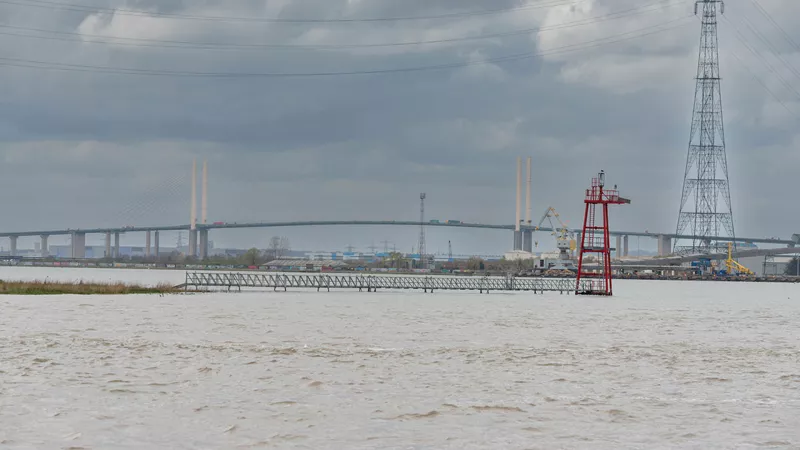

Location: London/Gravesend Remuneration: £28,971 per annum for a commitment of up to 24 days per...
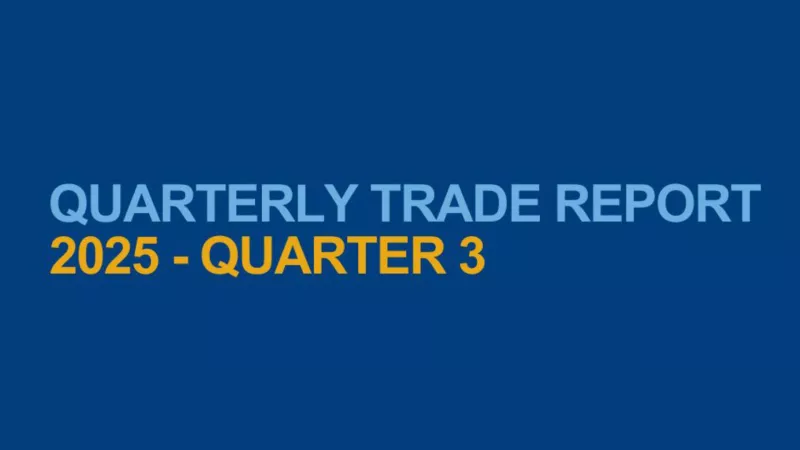
Unpacking the UK's busiest port
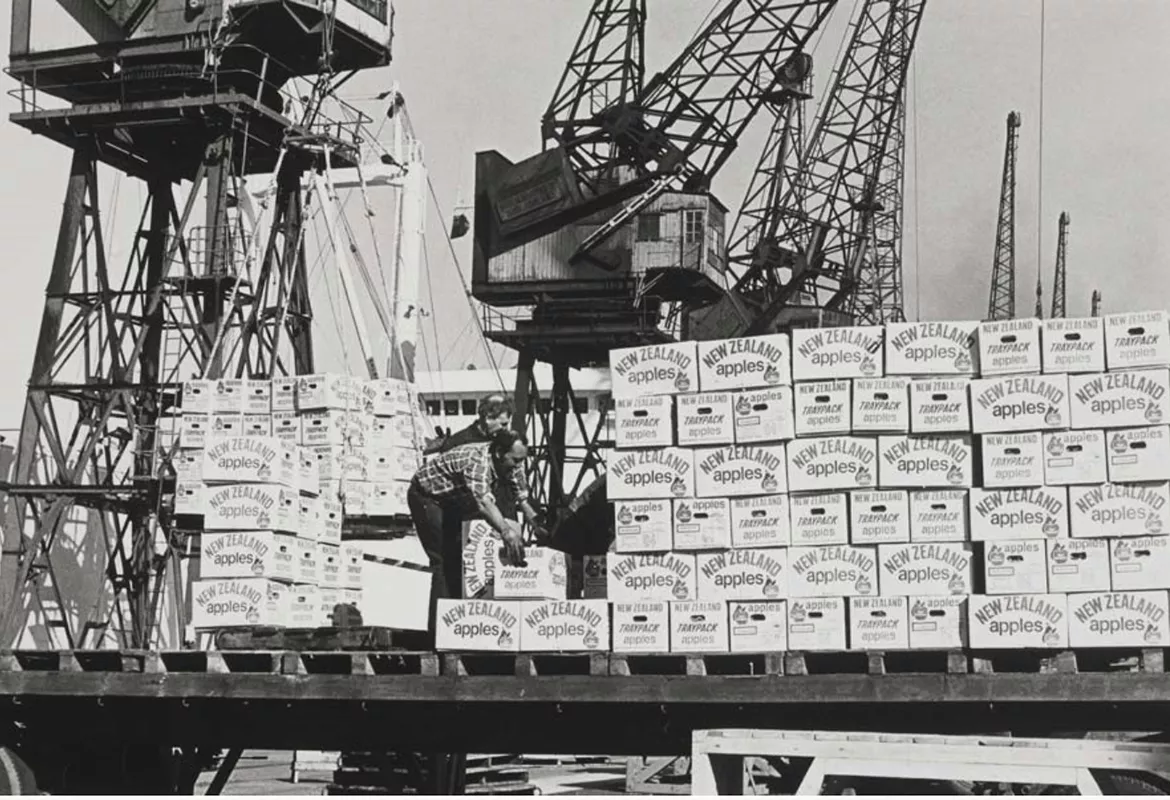
Major new Museum of London Docklands exhibition reveals the immense ‘hidden’ port we live and work alongside.
London: Port City
Museum of London Docklands
22 October 2021 – 8 May 2022
FREE
- Exhibition, in partnership with the Port of London Authority, unpacks the sheer scale of the international port that we live and work alongside, fully, for the first time.
- How the Port of London has changed and shaped the city, its people, places and language, over centuries.
A live shipping tracker shows the extent of Thames traffic today – the port handles over 50m tonnes of cargo and receives over 12,000 commercial vessels each year, connecting with over 50 countries worldwide. - Exhibition explores the truths around Empire that underpin the Port’s prosperity.
- Entry is free, book tickets here: https://www.museumoflondon.org.uk/museum-london-docklands/whats-on/exhibitions/london-port-city
- A new major exhibition, opening later this year, will reveal the ongoing impact of the Port of London on our capital city, its people, design, culture, prosperity and global position. The exhibition will trace more than 200 years of extraordinary experiences and intense activity on a river whose continued importance in the 21st century may come as a surprise to the millions of people who live and work alongside it.
London: Port City runs from 22 October 2021 to 8 May 2022 at the Museum of London Docklands, itself originally part of West India Docks, London’s first enclosed dock system and a hive of activity packed with valuable cargoes from around the world from 1802 until its closure in 1980.
The exhibition will draw upon the extensive archives of the Port of London Authority (PLA) to present a nuanced picture of the complex operations that have enabled the Port to connect London to the rest of the world, from the final days of the 18th century to the creation of the huge London Gateway ‘mega port’ at Thurrock in the Thames Estuary. The exhibition will be peppered with stories, incidents, major operations, absorbing characters, technological advances, pivotal moments, surprising details and little-known facts. London: Port City will also critically explore the port from many perspectives including the legacies, results and reminders of the British Empire.
Claire Dobbin, exhibition curator, said:
“The port and its impact on London is massive - not just historically, but today. Handling over 50 million tons of cargo a year, from our morning coffee to the clothes we wear and materials for buildings we live and work in, the port plays a vital role in our daily lives and national economy. It’s moved down river – and for many of us out of sight – but the port is still very much part of London. Our riverside cityscapes are also peppered with echoes of the port’s history - in its architecture and street names. Our cultural landscape too has been shaped by centuries of global exchange – by people, products and ideas passing through the port. This influenced and enriched language, diversity and communities that underpin the city we know today.”
Robin Mortimer, PLA chief executive, said:
“The importance of the trade on the Thames has been pivotal to London’s development and will be crucial to its future success. As life gradually returns to something like normal, post the pandemic, this exhibition is a not-to-be-missed opportunity for the public to explore how the commercial river shapes all our lives. It covers all aspects of the port’s past, present and future – from the contribution of immigrants over many decades to the latest technology we use to keep river users safe. Coinciding with our refresh of the Thames Vision strategy, to make sure it remains relevant in a fast- changing world, it’s a great way to focus on how we learn from the past and make the most of future opportunities to make full use of the river’s potential.”
Exhibition highlights include:
- Revealing the stories behind 80 words and expressions that entered the English language and the place names of streets and pubs as a result of the docks including ‘crack on’, ‘aloof’ and ‘Mudchute’.
- An impressive audio visual display that will transport visitors into the PLA control room, using large-scale projections to create a day in the life of the Port of London, with multiple spectacular views of the river and all of the activity happening 24 hours a day.
- An interactive timeline reveals stories from the docks since 1800, using 222 objects from the PLAs vast and eclectic archive. Material ranges from sandals with hollowed out soles to smuggle opium, seized in the 1870s, to original plans for the world’s most innovative purpose-built dock complexes.
- Many of the dockers whose voices feature throughout the exhibition recall being hit by a heady aroma as a new cargo was unloaded or as they made their way through different areas of the docks. Visitors will experience a suite of distinct scents, carefully blended to capture the original pungency of the port.
- Trade Winds: London, a new artwork by contemporary artist Susan Stockwell, using archive material and international currency to explore themes of international trade, economies, migration and empire. Elsewhere, a new artwork by Hilary Powell uses experimental photographic techniques and film to explore the container shipping industry and the people who keep it going.
- Importantly, the exhibition will address the wider global context of London’s seaborne trade, most notably its historical dependence on the sugar trade and slavery. A document commemorating the original unveiling of the statue of merchant and slave owner Robert Milligan, which was removed from outside the museum in 2020, is displayed alongside original plans for docks. It serves as a reminder of the full truth behind the economic prosperity that made the building of West India Docks possible.
Related content


Location: London/Gravesend Remuneration: £28,971 per annum for a commitment of up to 24 days per...

Thames Barge Sailing Race returns
Richard Titchener

Cancelled by the pandemic in 2020, the historic Thames Barge Sailing Race breezes back into Gravesend on 14 August. Skipper of entrant Blue Mermaid, and co-founder of the Sea-Change Sailing Trust, Richard Titchener, from Maldon, Essex, casts light on his life on the estuary.
A seaside childhood
“I grew up in Brightlingsea, rushing for the school bus to the tune of the shipyard whistle, or ships blowing horns to call a pilot.
“I started sailing at the age of eight in eight-foot pram dinghies on the boating lake with cotton lugsails.
“I graduated to tidal water with Brightlingsea Sailing Club whilst at junior school.
“I have always been fascinated by the simplicity of working boats.
“Even at an early age, I liked it that you could walk wide decks, or make a cup of tea on board.
“Denied the opportunity of trainspotting by Dr Beeching removing our railway, I instead donned anorak and watched the comings and goings of the early charter barges, most of them then sailed without engines, crewed by ex-trading bargemen.
“I remember being let loose with a group of friends in an engine-less sailing smack, armed with a hand pump, oil lights, a couple of anchors, rowboat and a lead line.
“It all seemed perfectly normal, because it was.
“The adults were usually just out of sight. We felt like kings of the world, getting into enough scrapes to learn a lot, but not enough to come to a sticky end.”
Changing times
“There was a healthy fishing fleet back then.
“By the seventies, enthusiasts were taking the engines out of motor smacks and returning them to sail as yachts, advised by retired fishermen, wearing jerseys with names like Britannia, White Heather or Westward.
“We thought these yachts were consigned to history, but many are now restored and in the Mediterranean.”
London bound
“In 1972, an oyster smack race from Gravesend to Cherry Garden Pier took me to the capital, ending with a reception at the Old Billingsgate, reached via a vertiginous ladder, in pouring rain.
“A few years later, a gap year gave me the chance to work on a motor barge in the last years of the docks, with ships discharged into lighters and barges alongside.
“Standing on the forecastle head of a ship in the Royal Albert Dock and looking west, you felt you could reach out and touch St Paul’s! Cathedral.
“It was a privilege to witness a way of life that had been unchanged for generations, although during that year there was a strike about containerization. It was obvious where things were heading."
Career choices
“So off I went to get a degree in something I enjoyed and a began a career in what is now called HR; back then we called it Personnel Management.
“My timing was not brilliant, joining British Steel, just as Margaret Thatcher got into gear; but what an experience!
“If you get a chance to visit a cast house floor when a blast furnace is tapping, do so, while you still can.
“After fifteen years and when GEC Marconi closed the factory I worked at in Chelmsford, I was fortunate to turn sailing from a hobby into a career and became a barge mate, working with young people.
“That is now twenty-seven years ago.”
Life-changing charity
“We set up the Sea-Change Sailing Trust in 2007, to allow us to keep working with young people on Thames barges.
“Why? Because they are fantastic.
“If you divide the amount of fun to be had by the number needed to have it, you cannot beat a sailing barge.
“Two people can sail a ninety-foot vessel carrying 150 tons of cargo, or a group of trainees can sail intensively and learn seamanship hands on. They see immediately what they get out for what they put in.
“In sail-training, learning skills and working together is a vehicle for people to learn about themselves:
“For us, it is also important to be in harmony with nature, with wind and tide.
“We work with people from age seven, to those living with dementia.
“A typical day might involve: an early start to catch the tide, young people working the anchor windlass, with breakfast underway, anchoring in a sheltered creek for seal spotting, then an evening teaching rowing, or how to sail one of our toppers to the beach.”
Hands-on restoration
“After several years hiring, the trust was able to build our own barge, Blue Mermaid, a replica of one of the last Thames barges built in 1930.
“When we started the project, with the help of many, including the PLA, we were ahead of the sail-cargo curve.
“Now it has caught us up.
“Excitingly, current thinking commits to carbon targets ahead of the technology to achieve them, but an engine-less sailing barge already operates with low emissions, and we offset the little we do produce.
“Blue Mermaid is built to cargo rules, and we are working with the Maritime & Coastguard Agency to enable her to carry it soon.
“The original Blue Mermaid was lost to a mine on 9 July 1941."
Turning the COVID corner
“Our Blue Mermaid was commissioned in May 2019.
“We had been looking forward to a bumper first full season, when COVID-19 intervened.
“Fortunately, with the help of furlough emergency funding and all our supporters, the charity has survived.
“I am very grateful to everyone who has helped us make it through.”
Racing certainty
“It is good to see the matches restarting again. We are all looking forward to Saturday.
“Established by Henry Dodd, who made his fortune moving London's rubbish by sailing barge, the Thames Match ranks second only to the America's Cup, as the oldest sailing event in the world.
“We first took part in a barge called Xylonite.
“Over the years we have been regularly joined by PLA friends.
“This year there should be nine barges taking part.
“It will be so good to get out on the water, enjoy the river and catch up with friends after the long months of lockdown.”
Quickfire
- Person you'd most like to meet? Winston Churchill
- Favourite place on the Thames? Anchoring in the Lower Hope, near where Joseph Conrad lived at Stanford Le Hope and where his narrator Marlow started several of his tales.
- Best Thames-side restaurant or pub? The Town of Ramsgate in Wapping.
Find out more about Richard's work with the Sea Change Sailing Trust.
Related content


Location: London/Gravesend Remuneration: £28,971 per annum for a commitment of up to 24 days per...

At home on the Thames
Ken Dwan

Photo: Ken and Kate Dwan in their boatyard on Eel Pie Island.
With family links to the river stretching back five centuries, the Thames will always be home for rower, Queen’s waterman, Olympian, Doggett’s Race champion and boatbuilder Ken Dwan – and his two sons and five grandchildren.
Rowing roots
“One of my earliest memories is playing on the beach at Rotherhithe, where I was born. My grandparents ran The Torbay pub in Elephant Lane.
“We lived in Greenwich for a while, before moving out to Swanley in Kent.
“Living so close to the river, it was a very happy childhood.
“It’s fair to say I wasn’t a natural scholar – for me, getting out on the river always took priority over studying.
“I learnt to row at Poplar Blackwall & District Rowing Club, aged 12.
“It was the start of a life-long love for the sport.”
Olympic memories
“Competing in both the Mexico and Munich Olympics was a privilege I will never forget.
“My prediction is that Team GB will win 25 medals in Tokyo, including one of each colour for the rowers. Anything else will be a bonus.”
Doggett’s dynasty
“It’s now 50 years since I won the Doggett’ s Coat & Badge Race.
“I am proud to say I have I have not missed one since.
“Competing in the race is a matter of honour for Thames families like ours.
“It’s a source of real pride, that passes from one generation to the next.
“My brother, John, two sons, Nick and Robert, and nephew, Merlin, have also had the honour of competing.
“I fully expect my grandchildren to follow suit. I try to take them out on the river as much as possible. We constantly talk about the river as a family.
“I am sure the race will survive for many years to come. It’s part of the fabric of the river.
“Competing means a lot to all recently-qualified river apprentices eligible to take part.
“It showcases their knowledge of the river, with all its twists and turns.
“Physical strength and power are important, obviously, but understanding the river and its currents is also a major factor.
“This year we are enjoying a double helping of Doggett’s.
“James Berry was a worthy winner in the delayed 2020 race in June.
“Max Carter-Miller, the runner up, has to be the hot tip for the 2021 race on 8 September.
“Perhaps I should declare an interest – he works for my sons, Nick and Robert, who run fuel supply business Thames Marine Services.
COVID battle
“I caught COVID in March 2020 and was in intensive care for three weeks. No family visit or calls were allowed.
“Without a doubt, they were the worst days of my life. I wouldn’t wish them on anyone.
“On admission to A&E, a young doctor recognised my name and introduced herself as my brother’s neighbour. She visited me before and after every shift and would update my wife Kate and the rest of the family on my condition when she got home. I don’t know how I would have got through it without her.
“One afternoon, Kate was asked to get a mobile phone in, so I could say goodbye.
“Later that evening a young doctor came on duty and suggested they try an antimalaria drug on me.
“It had an almost immediate effect and my oxygen levels increased rapidly. I was over the worst.
“I wish the pandemic would go away once and for all.
“I am very fearful for the people who refuse to have the vaccine.”
Busier than ever
“Despite the pandemic, the boatyard I run on Eel Pie Island has never been busier.
“During the initial lockdown, we closed for 13 weeks to protect our staff and their families. Everyone came back recharged and raring to go.
“The closure of Hammersmith Bridge was an inconvenience for customers eager to get their boats surveyed for insurance renewals, but everyone was understanding. We just brought forward the jobs we could do.”
Looking back, looking forward
“I have had a good life, earning a decent living on the Thames.
“There have been hard times of course, but I emerged from them a better waterman and a stronger person.
“I have been fortunate enough to have been involved in most of the great river pageants. All were great occasions.
“In my lifetime the river has changed beyond imagination.
“I hope it can move forward and become a thriving industry once more.
“I would always encourage anyone considering a career on the Thames to give it a go.
“It’s a life full of great opportunities.”
Quick Fire
- Top spot on the river? I don’t have one particular favourite place. I’m happy anywhere between Letchlade and the sea.
- Holiday plan? We are going to Dartmouth this summer. Post the pandemic, I can’t wait to get to Turkey, where we have a boat.
- Pet hates? Things not put back in their right place.
Related content


Location: London/Gravesend Remuneration: £28,971 per annum for a commitment of up to 24 days per...

First CPD programme for river workforce launched by Thames partnership
The country’s first inland waterway continuing professional development (CPD) scheme has been launched by the Thames Skills Academy (TSA), the Company of Watermen & Lightermen (CWL) and the Port of London Authority (PLA).
Initially open to those with a Boatmaster’s Licence (BML), it will be rolled out to include everyone working afloat.
The programme has been designed to help crews employed on the capital’s river build long-term careers, with input from commercial boat operators and their employees from the 95-mile length of the tidal Thames, from Teddington to the North Sea. Partners involved include Cory, GPS Marine, Livett’s Group, Tideway, Transport for London (TfL) and Uber Boat by Thames Clippers.
Derek Mann, master of CWL, who has worked on the river for over 50 years, said: “Whether you are 17 or 70, Thames CPD is a major step forward for everyone who makes their living on the river.
“I encourage all my river colleagues to sign up to the Thames CPD programme. The world is changing fast, making it essential that river workers’ skills are up-to-date and fit for the challenges that lie ahead. “
Christopher Rodrigues, PLA chairman, said: “A well-trained, well-qualified workforce is central to maximising the river’s social, economic and environmental potential and achieving our Thames Vision 2050 goals.
“Thames CPD, designed for and by river workers, will help maintain the Thames. the beating heart of London, as one of the world’s premier waterways.”
Richard Everitt, TSA chairman, said: “Thames CPD is the result of detailed consultation with companies operating on the tidal Thames and their crews, as well as leisure users of the river.
“I would like to thank everyone who has helped us with its development. As more companies and workers sign up, I look forward to it going from strength to strength in the years ahead. It’s a vital building block in ensuring the river’s continued prosperity.
Jeremie Dousellin, who secured his BML in 2020 and recently joined the PLA from City Cruises, said: “Thames CPD is a chance for me to keep my skills and knowledge up to date.”
More information can be found on the dedicated Thames CPD site.
Related content


Location: London/Gravesend Remuneration: £28,971 per annum for a commitment of up to 24 days per...

Steven Clapperton to join Port of London Authority
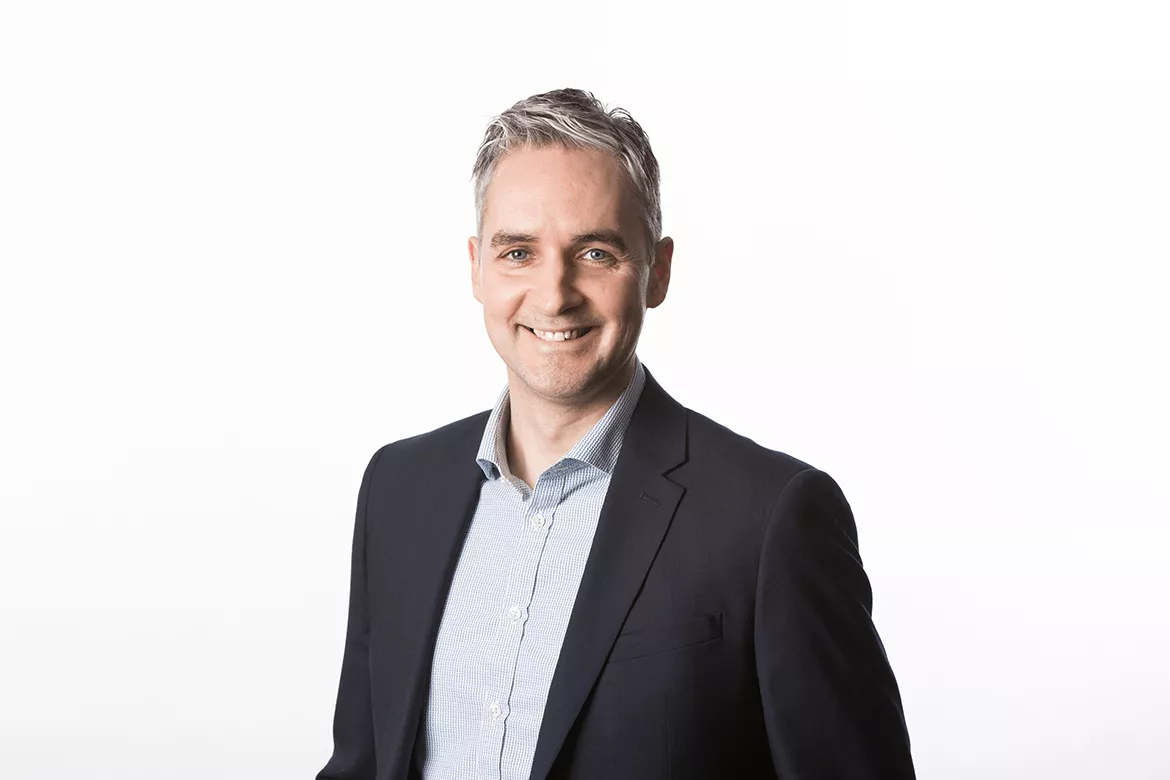
Steven Clapperton has been appointed Director of Marine Operations at the Port of London Authority (PLA), the body responsible for running the UK’s largest port and busiest inland waterway, the tidal Thames.
Steven will join the PLA in September, from the Port of Tyne, where he has been maritime director & harbour master since late 2016. He succeeds Peter Steen, who is retiring after 32 years’ service.
Steven will lead the PLA’s marine operations team, including hydrographic services. His duties will cover managing the authority’s significant vessel fleet, channel marking, salvage and driftwood clearance. He will also take on a range of other senior management responsibilities.
Prior to joining the Port of Tyne, Steven worked at sea for Subsea7 and Fugro McClelland Marine Geosciences. He first worked at the Port of Tyne from 2005 to 2013 as a senior pilot, before joining DNV GL and working on secondment with Shell UK Exploration & Production.
PLA chief executive, Robin Mortimer, said: ““Steven brings with him a range of valuable skills and experience.
“He’s set to join us at a key moment. Last year we became the UK’s largest port again, for the first time since 1999.
“Currently, we are busy updating the long-term Thames Vision development plan to 2050, to make sure the river’s full social, economic and environmental potential is fully realised.
“When Steven joins us in September, we will be saying farewell to Peter Steen, who will be leaving with our profound thanks for more than three decades of service, which saw him lead many of our main operations. He can be very proud of his fantastic contribution.”
Steven is a qualified master mariner, holds a diploma in port management, and is studying for an executive MBA at Cranfield University.
Related content


Location: London/Gravesend Remuneration: £28,971 per annum for a commitment of up to 24 days per...

Staycation safety on the tidal Thames
“Don’t underestimate the tidal Thames’ ability to claim lives.”
That’s the advice this summer, from river safety chiefs to staycation tourists and those tempted to cool off in its waters.
As the schools break up and families prepare to head for domestic attractions, rather than foreign beaches, due to the pandemic, the Tidal Thames Water Safety Forum (TTWSF) is keen to alert all river users to the need to prepare fully and stay alert, when on or by the tidal Thames.
Port of London Authority Harbour Master Ryan Hall said: “The Thames is a great all-year-round destination for relaxation and recreation, but holds hidden dangers that should be kept front of mind at all times, particularly by inexperienced or untrained users.
“With warmer weather forecast for the capital, it’s important to remember that the Thames’ waters remain chilly, whatever the season, and can cause anyone who plunges in to suffer heart seizure, known as cold water shock.
“The Thames also flows at a faster rate than an Olympic swimmer and is subject to a daily rise and fall of up to seven metres.
“The deep foreshore mud is a further hazard, subjecting anyone caught there to the power of the river’s rapid ebb and flow.”
On average the officers from the capital’s Marine Policing Unit attend over 20 incidents a week on the River Thames.
Anyone who finds themselves struggling in the waters of the tidal Thames this summer, should follow the RNLI’s Float to Live advice:
- Fight the natural instinct to thrash around.
- Lean back, extend your arms and legs; if needed, move them gently around, to keep your head above water.
- Float until you can control your breathing; only then call for help, or swim to safety.
Ryan Hall added: “Members of the public who spot someone in the river in trouble should call 999 immediately and ask for the coastguard, rather than attempt a rescue.
“The best way to help is to throw a life ring, if possible, keep a close eye on the person in trouble and wait for professional rescue personnel to arrive.
Related content


Location: London/Gravesend Remuneration: £28,971 per annum for a commitment of up to 24 days per...

Brandon’s Thames career kickstarted
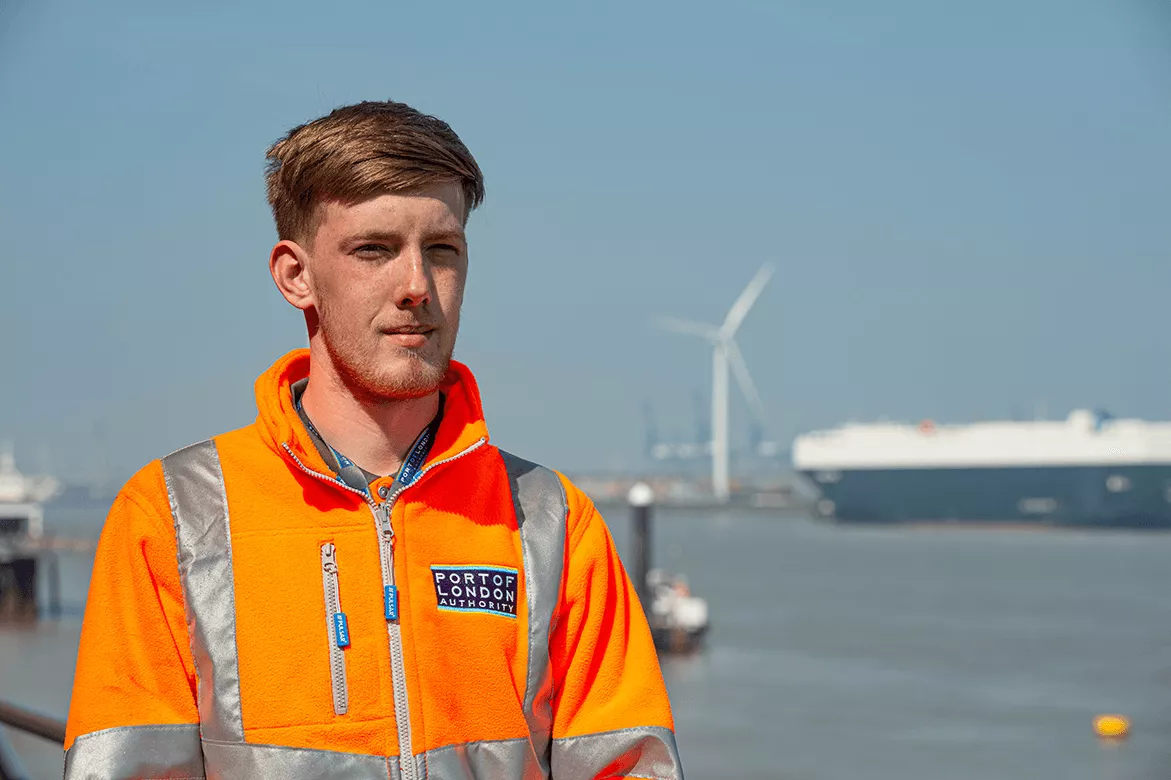
Brandon Cripps (19), from Hoo in Kent, has secured a contract with the Port of London Authority (PLA), just two months into a temporary placement, funded by the government’s Kickstart programme, designed to help unemployed young people build long-term careers.
The former student of motor vehicle engineering at Bromley College started his six-month Kickstart placement with the PLA’s marine services team in early May.
With a fresh contract, putting him on the PLA’s payroll, he will now stay in post until at least the end of the year.
Brandon’s role involves maintaining infrastructure along the 95-mile course of the tidal Thames, from Teddington to the North Sea.
His line manager, Michael Russell, said: “Brandon has rapidly established himself as a reliable and hard-working member of the team. Right from day one, he has shown the highest levels of enthusiasm and commitment. It’s right that we should convert his traineeship into a PLA funded role.
“Brandon will be a vital pair of hands for us, helping cover colleagues’ summer leave. Given the exemplary attitude he has displayed, a permanent, long-term role is not out of the question.”
Prior to the pandemic, Brandon worked temporarily on pleasure boats in central London.
A total of 11 trainees have joined the PLA via the Kickstart programme, working across a range of departments, from environment, legal, HR, IT, finance and facilities.
Related content


Location: London/Gravesend Remuneration: £28,971 per annum for a commitment of up to 24 days per...

Minister climbs the ladder to mark Maritime Safety Week

The shipping minister kicked off Maritime Safety Week (5-9 July), by climbing a ladder, used by the Port of London Authority (PLA) to train employees who board commercial vessels, in all weather, to ensure they have a safe passage up and down the Thames estuary.
Robert Courts MP was in Gravesend, Kent, to meet some of the PLA’s newest pilot trainees, recruited to ensure it can continue to provide a high level of service to customers, along with apprentices from a range of disciplines, and trainees funded by the Government’s Kickstarter programme.
The minister commented: “At the start of Maritime Safety Week, it was great to meet the pilots and other PLA staff, who have played such a vital role in keeping the river open for trade throughout the pandemic.
“Thanks to them and their counterparts at ports around the country, ever since COVID-19 first hit, supermarkets shelves have been regularly replenished, and other vital commodities, such as fuel and medical supplies, have not run short.
“Learning about the physical rigours pilots boarding and disembarking from ships have to endure, come rain or shine, was a real eye-opener.
“It was reassuring to see the high priority the PLA gives to the safety of its staff, on the water and on land."
Robin Mortimer, chief executive of the PLA, said: “The safety of our employees and all river users is fundamental for us. It’s the non-negotiable bedrock of how we operate.
“Maritime Safety Week is a vital annual reminder of why preventing even small mishaps is so important.”
So far in 2021, the PLA’s pilotage team has delivered a 99.6 per cent service record to customers.
Related content


Location: London/Gravesend Remuneration: £28,971 per annum for a commitment of up to 24 days per...

Thames 2050: the route to a cleaner future
Port of London Authority (PLA) corporate affairs and strategy director, Alistair Gale, looks at the building blocks in place for the Thames’s cleaner future and invites you to have your say on the Thames in 2050.
London Climate Action Week has inspired debate and events, drawing a bead on one of the greatest challenges of our generation.
At the PLA, we have climate change firmly in our sights: for our own operations and the river as a whole.
For our own operations we have a costed, planned programme to reach Net Zero by 2040, or earlier. The first step? Switching our vessels to cleaner diesel, which will rapidly halve our carbon emissions. It is just the first of many changes.
In two weeks, we will start refitting one of our driftwood vessels with selective catalytic emissions reduction technology. This is part funded by Clean Air Thames, a Mayor’s Air Quality Fund £500,000 pilot project.
Driftwood II is one of two vessels that recover rubbish, including plastics and timber, from the river. On return to the river later in the summer, the vessel’s emissions will be dramatically reduced. Simply put, it will be cleanest vessel on the Thames, cleaning the waters of the Thames.
We’re looking to the future of the wider tidal Thames out to 2050, refreshing the river development framework, the Thames Vision. Originally focused on increasing river use by 2035, we are now updating it to reflect a Net Zero carbon world, in just 29 years.
As the UK’s largest port and busiest inland waterway for passengers and freight, it’s an important transition to what will be a radically different future.
Over the last 12 months, we have engaged in ground-breaking research as we prepare, looking at the likely shape of port trade in 2050. This shows a projected rapid fall in fossil fuel imports, with future total annual trade volumes ranging between 50 million to 90 million tonnes.
With an expert panel, we have been looking at the global factors set to influence the future of the tidal Thames. From those discussions, emerged outline proposals for a future centred on sustainability pillars: social, economic and environmental.
For ports, there is scope to go further. As points of exchange in transport networks, as the route through which energy flows to businesses and consumers, ports will have a central role to play in our low carbon future.
With our partners at the Thames Estuary Growth Board, we are looking at hydrogen as part of our low carbon energy mix, for transport, both on water and on land.
The research, the planning goes further again. In partnership with vessel operators on the Thames we have created the UK’s first emissions reduction roadmap for inland waterways vessels. To complement it, we have just commissioned a study mapping the landside infrastructure needed to ensure deepsea and inland vessels can access the energy they need in the UK’s biggest port.
The river renaissance for freight is playing its part. Traditionally a low carbon route for bulky materials such as sand and gravel, logistics companies are now looking to the Thames for light freight projects too. Just two weeks ago, CEVA started a pilot trial bringing NHS supplies into the heart of the city by boat from Dartford, congestion free, with the last couple of miles completed by electric bike.
Technological development is being targeted. We’ve recently closed the first round of bidding for our Sustainable Innovation Fund. The initial innovation priority: the first zero-emission berth on the river. Alongside this, is the tidal energy generation test site we designated earlier in the year. Our commitment to building back cleaner and better is manifest.
These developments deliver on core commitments of the Thames Freeport, a unique coalition of experts and capability in transport, logistics and manufacturing, ready to deliver transformative change in supply chains and urban mobility.
When you visit London, there is no better place to see the city than from a Thames passenger boat, at night. Passenger operations will be part of the energy transition as well. For now, as we watch for a recovery in travel and tourism, they offer a fantastic, COVID-secure travel option to access UNESCO world heritage sites by day and the new bridge illuminations by night.
In the country's largest port and busiest waterway, our aim is to draw together all of the developments in river use, the low emissions innovations, the plans for the future into Thames Vision 2050.
The Thames is set for an exciting future. It will remain a route for trade, a highway for travel and commerce, a centre for sport and recreation. And it will become a catalyst for change as we work towards and secure a low carbon future.
If you want to share your view on what we might do, take the opportunity now. Until midday on Wednesday, 14 July you can complete our Thames Vision 2050 survey.
Related content


Location: London/Gravesend Remuneration: £28,971 per annum for a commitment of up to 24 days per...

Discover
